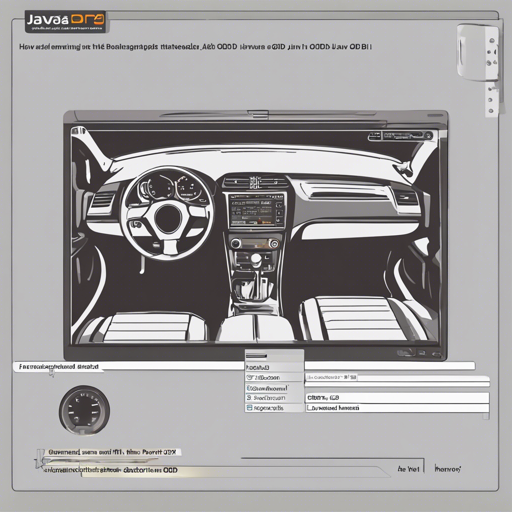The OBD-II Java API allows developers to communicate with vehicles’ onboard diagnostics systems, enabling various functionalities such as reading data and executing commands. In this blog post, we will guide you on how to set up and use the OBD-II Java API effectively.
Getting Started
Before diving into the code, make sure you have the necessary tools to get started!
- JDK 7 or higher installed on your machine.
- Maven 3.1 or newer for dependency management.
Compiling and Installing the Library
To compile and install the OBD-II Java API locally, use the following command:
mvn clean installUsing the OBD-II Java API with Maven or Gradle
You can include the OBD-II Java API in your project using either Maven or Gradle. Just copy and paste the corresponding dependencies into your project:
For Maven:
<dependency>
<groupId>com.github.pires</groupId>
<artifactId>obd-java-api</artifactId>
<version>1.0</version>
</dependency>For Gradle:
dependencies {
compile 'com.github.pires:obd-java-api:1.0'
}Running Example Commands
Once you have connected to your ELM327 device via Bluetooth, you’ll need to execute some commands. Think of the ELM327 as a translator for your car’s diagnostic language. The commands you’re going to run are like asking your mechanic to check specific systems in your vehicle.
Here’s how to send some basic commands:
try {
new EchoOffCommand().run(socket.getInputStream(), socket.getOutputStream());
new LineFeedOffCommand().run(socket.getInputStream(), socket.getOutputStream());
new TimeoutCommand(125).run(socket.getInputStream(), socket.getOutputStream());
new SelectProtocolCommand(ObdProtocols.AUTO).run(socket.getInputStream(), socket.getOutputStream());
new AmbientAirTemperatureCommand().run(socket.getInputStream(), socket.getOutputStream());
} catch (Exception e) {
handle errors
}Understanding the Example Code
In our analogy, each command is like a mechanic checking a specific part of your car. The first command, EchoOffCommand, is akin to telling the mechanic to stop talking back while you run diagnostic tests. Each subsequent command changes settings or checks specific data—like setting a timeout, selecting the protocol, or checking the ambient air temperature.
Troubleshooting Tips
If you encounter issues while using the OBD-II Java API, here are some troubleshooting steps:
- Ensure that your ELM327 adapter is compatible with your vehicle. You can check this by using popular OBD diagnostic tools, such as Torque or Scanmaster.
- Reset your ELM327 adapter’s state to ensure proper functionality by executing the following commands on an ELM327 terminal for Android:
- ATDA
- ATZ
- ATE0
- ATL0
- ATS0
- ATH0
- SP0
For more insights, updates, or to collaborate on AI development projects, stay connected with fxis.ai.
Conclusion
At fxis.ai, we believe that such advancements are crucial for the future of AI, as they enable more comprehensive and effective solutions. Our team is continually exploring new methodologies to push the envelope in artificial intelligence, ensuring that our clients benefit from the latest technological innovations.

